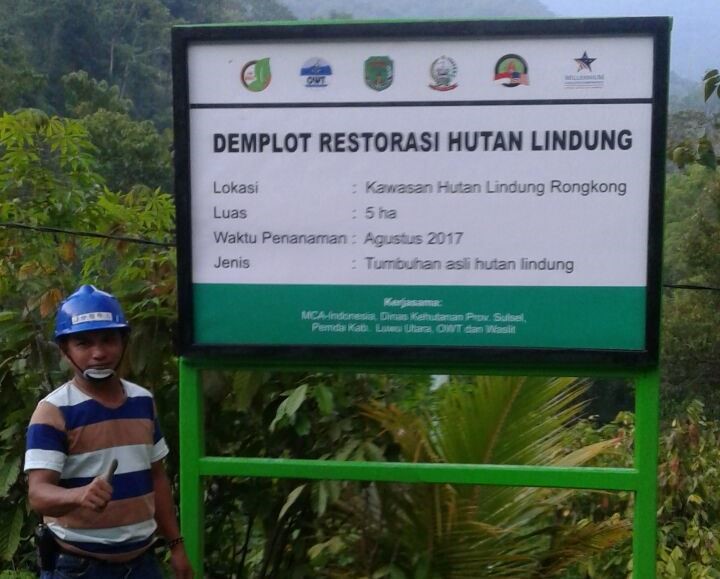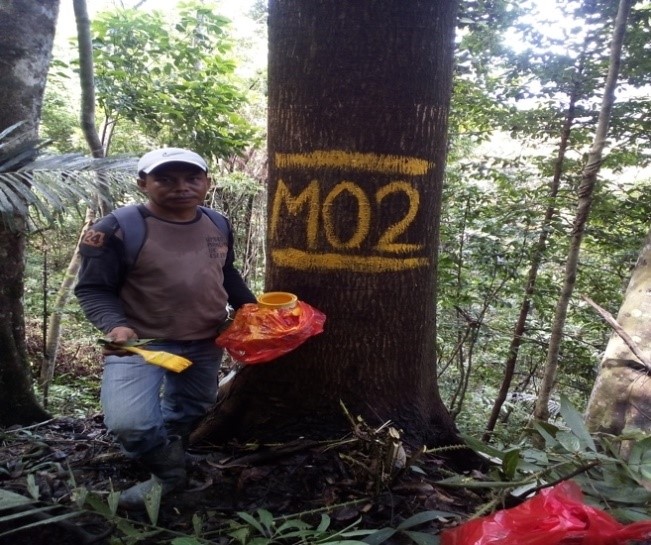
Selection of Parent Trees. Land rehabilitation and ecosystem restoration require more than just planting the right species in the right place. The genetic diversity of the seedlings planted will have a significant impact on the success of ecosystem restoration in the next few decades. The selection activity of parent trees in the Rongkong Protection Forest area is a series of implementation of protected forest restoration and to meet the need for quality seeds from parent trees that phenotypically (appearance) show superior characteristics (straight trunk, large diameter, free from pests and diseases, cylindrical, etc.). This parent tree selection activity is also useful as an effort to maintain the sustainability of the types of flora in the Rongkong Protection Forest area. The parent tree can be used as a tree that produces quality seeds or seedlings. This makes it easier for the community to provide quality seeds because they come from good tree descendants. With the existence of parent trees that have been verified, people who want to develop typical Sulawesi plants will no longer hesitate to take seeds from these trees.

Seedling production and maintenance for forest restoration. This process involves the community around Protection Forest, in order to increase awareness and capacity of target community and obtain support from the assisted village government. The activity involves members of the farmer groups including the general public around the assisted village, the government at the activity location and the OWT-WASLIT Consortium.
Planting . Reintroduction activities are carried out to return species to their natural habitat by planting using seedlings that have been developed in nurseries. The number of seedlings planted is 3,125 plants with a planting distance of 4 m x 4 m using a grid system because the restored land is a bush area. The area of restoration planting is 6.4 ha consisting of 5 ha in the Protected Forest area and 1.4 ha in the Production Forest area.
